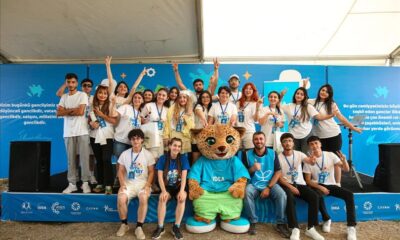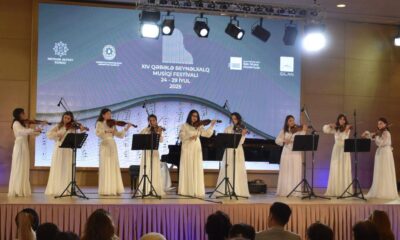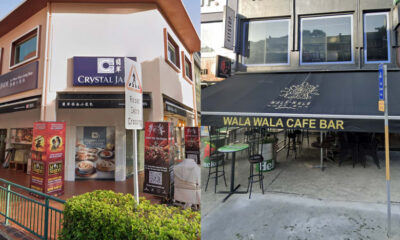World
Emirates Elevates Airbus A380 to Luxury Travel Icon Status
The Airbus A380 has become synonymous with luxury air travel, primarily due to the efforts of Emirates, the world’s largest operator of this iconic aircraft. With a fleet of 123 A380s, Emirates transformed the aircraft into a status symbol, enhancing its image through innovative features and unique branding strategies. This transformation has redefined what travelers expect from long-haul flights.
Emirates made a significant commitment to the A380, acquiring more than half of the 251 jets produced by Airbus. This decision not only supported the A380 program but also underscored Emirates’ vision of establishing a premium travel experience. While other airlines have downsized their A380 fleets or planned to phase them out, Emirates has thrived, emerging as the most profitable airline in the world in 2024.
Transforming Air Travel Experience
The luxury associated with the A380 is not merely attributed to its size or quiet operation, but rather to how Emirates has configured the aircraft. The airline offers extensive premium seating, including first-class suites and a unique onboard lounge featuring a bar and shower spa. These amenities create an experience reminiscent of private jet travel.
Emirates’ dedication to luxury has positioned it in the top five of Skytrax’s list of The World’s Top 100 Airlines, consistently competing with carriers like Qatar Airways and Singapore Airlines. In 2025, it was ranked as the fourth-best airline globally, behind Cathay Pacific. Notably, the first-class experience on Emirates’ A380s is not the most spacious when compared to competitors like Etihad and Singapore Airlines, who provide fewer suites but more space per seat.
Innovative Features and Brand Identity
One of Emirates’ standout features is the installation of a bar and shower spa on the upper deck, accessible to first and business class passengers. This risky investment has paid off, creating a social space that enhances the in-flight experience. The lounge, designed for flexibility, can be converted back into additional business-class seating within 96 hours if necessary.
Emirates has successfully linked the A380 to its brand identity. By dominating the market for this aircraft, it has created a distinct image that parallels the iconic Concorde, which was operated by only a few airlines. The A380’s recognizability has contributed to its status, as even casual flyers can identify the massive double-decker jet, unlike other aircraft types.
Looking ahead, Emirates continues to invest substantially in its A380 fleet, refurbishing interiors and adding 56 premium economy seats at the expense of regular economy seating. This move reflects a shift in passenger preferences and reinforces the airline’s commitment to providing a luxurious travel experience.
As Emirates transitions to a more diverse fleet, including new A350s and 787 Dreamliners, it remains to be seen whether the airline can replicate the marketing success it achieved with the A380. The upcoming 777X aircraft presents a new opportunity for Emirates to shape perceptions of modern luxury travel, although it lacks the distinctive qualities that set the A380 apart.
In summary, Emirates has redefined the perception of the Airbus A380 through strategic investments and innovative features, establishing it as a luxury travel icon. As the airline evolves its fleet, its legacy with the A380 will continue to influence the future of air travel.
-

 Lifestyle4 months ago
Lifestyle4 months agoHumanism Camp Engages 250 Youths in Summer Fest 2025
-

 Sports4 months ago
Sports4 months agoDe Minaur Triumphs at Washington Open After Thrilling Comeback
-

 Business4 months ago
Business4 months agoKenvue Dismisses CEO Thibaut Mongon as Strategic Review Advances
-

 Sports4 months ago
Sports4 months agoTupou and Daugunu Join First Nations Squad for Lions Clash
-

 Top Stories4 months ago
Top Stories4 months agoColombian Senator Miguel Uribe Shows Signs of Recovery After Attack
-

 Health4 months ago
Health4 months agoNew Study Challenges Assumptions About Aging and Inflammation
-

 World4 months ago
World4 months agoASEAN Gears Up for Historic Joint Meeting of Foreign and Economic Ministers
-

 Business4 months ago
Business4 months agoOil Prices Surge Following New EU Sanctions on Russia
-

 Entertainment4 months ago
Entertainment4 months agoDetaşe-Sabah Violin Ensemble Captivates at Gabala Music Festival
-

 Entertainment4 months ago
Entertainment4 months agoBaku Metro Extends Hours for Justin Timberlake Concert
-

 Business4 months ago
Business4 months agoU.S. House Approves Stablecoin Bill, Sends to Trump for Signature
-

 Top Stories4 months ago
Top Stories4 months agoRethinking Singapore’s F&B Regulations Amid Business Closures







